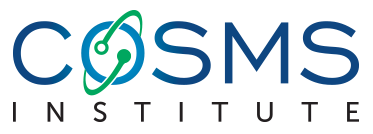Partnership
Our group works in close collaboration with colleagues at the Triangle Universities Nuclear Laboratory (TUNL) and the Institute for Cosmology, Subatomic Matter & Symmetries (CoSMS).
With TUNL

TUNL, the Triangle Universities Nuclear Laboratory, stands as a distinguished Center of Excellence within the U.S. Department of Energy. Formed through a collaborative effort among four esteemed universities – Duke University, North Carolina Central University, North Carolina State University, and the University of North Carolina – Chapel Hill – TUNL spearheads research endeavors focused on the core inquiries within nuclear physics.
At its core, TUNL delves into pivotal questions that underpin the field. It investigates the very essence of the proton and neutron, probing the forces that bind them together. By deciphering these forces, TUNL unveils the intricate patterns inherent in atomic nuclei. Moreover, the laboratory delves into the genesis of elements within celestial bodies, particularly stars, with the aim of gleaning insights about these distant luminaries through the study of nuclear processes. The pursuit also encompasses an exploration of the inherent symmetries of the natural world. It contemplates whether the laws of nature hold steadfast when mirrored or when the arrow of time is reversed. Additionally, TUNL explores the enigmatic properties of neutrinos. Despite an incessant torrent of around 70 billion neutrinos streaming through a space as small as a postage stamp every second from the sun, much about these particles remains shrouded in mystery.
This scholarly endeavor is driven by a dedicated team comprising 20 esteemed faculty members, 21 diligent research scientists, and postdoctoral scholars, 15 proficient staff members, approximately 40 graduate students, and about 25 accomplished undergraduates. TUNL’s overarching mission encompasses both the advancement of nuclear physics boundaries and the nurturing of young minds in the realm of science. The laboratory strives to equip students and budding scientists with knowledge that empowers their contributions across an extensive array of technical domains, prominently including nuclear physics. Remarkably, TUNL is instrumental in producing roughly 8% of all experimental nuclear physics PhDs in the United States, serving as a significant pillar of its societal contribution.
With CoSMS

Discoveries in subatomic physics, astrophysics, and cosmology have revolutionized our view of matter and the cosmos. These observations have given rise to a set of intertwined questions concerning fundamental symmetries, the interactions and substructure of subatomic matter, the formation of large-scale structures in the universe, the creation of the elements, and the nature and role matter and energy play in the cosmos. Answering these questions requires forging connections among theorists, experimentalists, and observers from a wide range of disciplines spanning physics, astronomy, and cosmology. The CoSMS Institute unites scientists to advance our understanding of the universe.